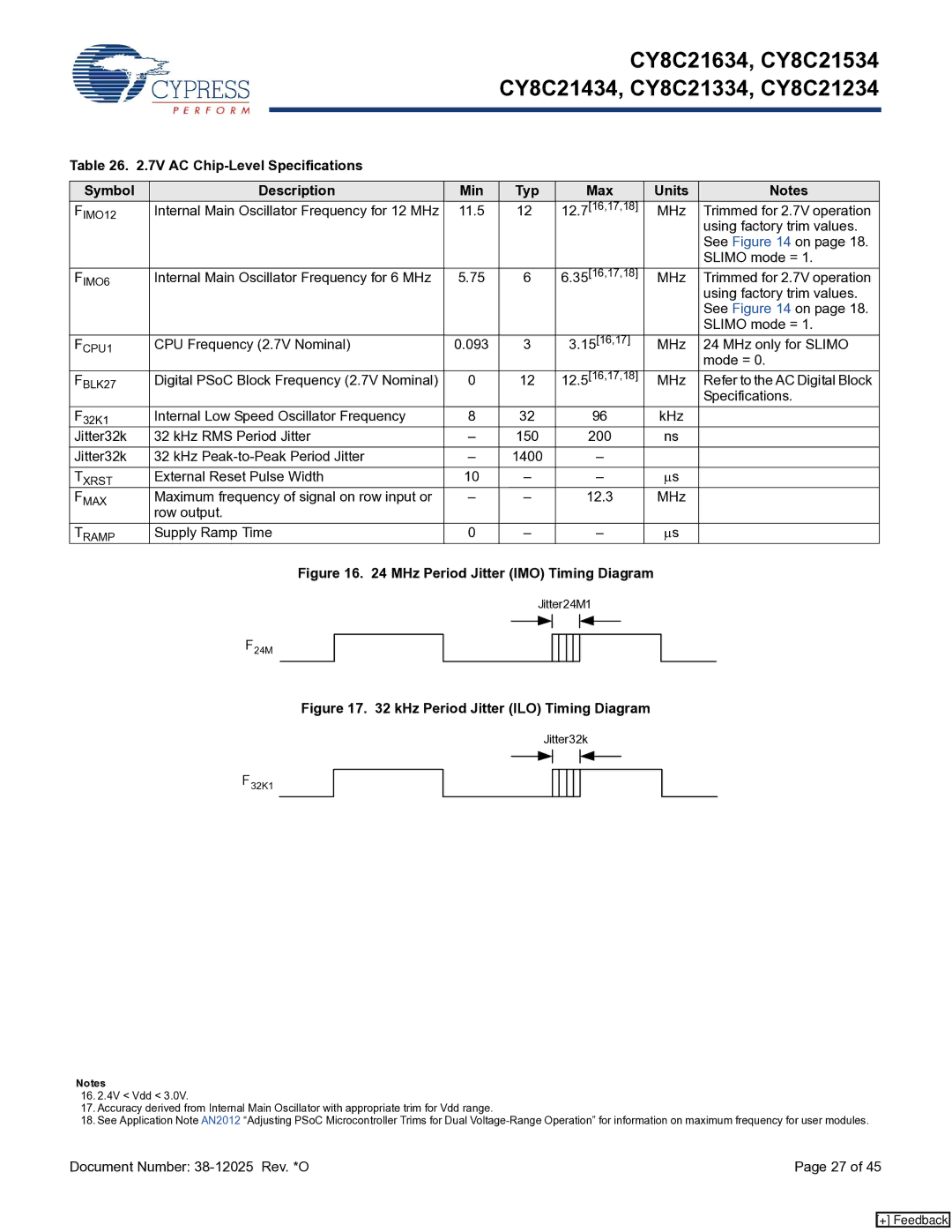CY8C21634, CY8C21534, CY8C21434, CY8C21334, CY8C21234 specifications
The Cypress CY8C21234, CY8C21334, CY8C21434, CY8C21534, and CY8C21634 are members of the PSoC® 1 family of microcontrollers, designed for embedded applications that demand flexibility, integration, and efficiency. These microcontrollers are well-suited for a variety of projects due to their unique characteristics and advanced technologies.One of the primary features of the PSoC 1 series is the integration of analog and digital components on a single chip. This combination allows for the implementation of complex control algorithms without the need for multiple external components. Each device in this family is equipped with programmable analog blocks capable of interfacing with sensors, as well as digital blocks that facilitate communication with various peripherals.
The CY8C21234 series provides a 16-bit architecture, which enhances performance for processing and control tasks. The microcontrollers boast an operational range of up to 24 MHz, making them suitable for high-speed applications. With up to 16 KB of flash memory, these devices have ample memory for storing program code and user data.
Another key characteristic of the CY8C21234, CY8C21334, CY8C21434, CY8C21534, and CY8C21634 devices is their ease of use. They come with a comprehensive development environment known as PSoC Designer. This software provides a user-friendly interface to configure the device’s hardware resources graphically and allows for seamless integration of custom firmware.
In terms of communication capabilities, these microcontrollers support multiple protocols, including I²C, SPI, and UART, providing versatile interfacing options with other devices. This makes them ideal for applications such as sensor processing, motor control, and portable devices.
Power management is another significant highlight of the PSoC 1 family. The microcontrollers are designed with low-power operation in mind, featuring multiple sleep modes that contribute to extended battery life in portable applications.
Overall, the Cypress CY8C21234, CY8C21334, CY8C21434, CY8C21534, and CY8C21634 microcontrollers are a versatile solution for a wide range of embedded applications, combining programmable analog and digital components, ease of development, and efficient power management in a compact form factor. Their performance and flexibility make them a popular choice among engineers and developers exploring innovative designs.

